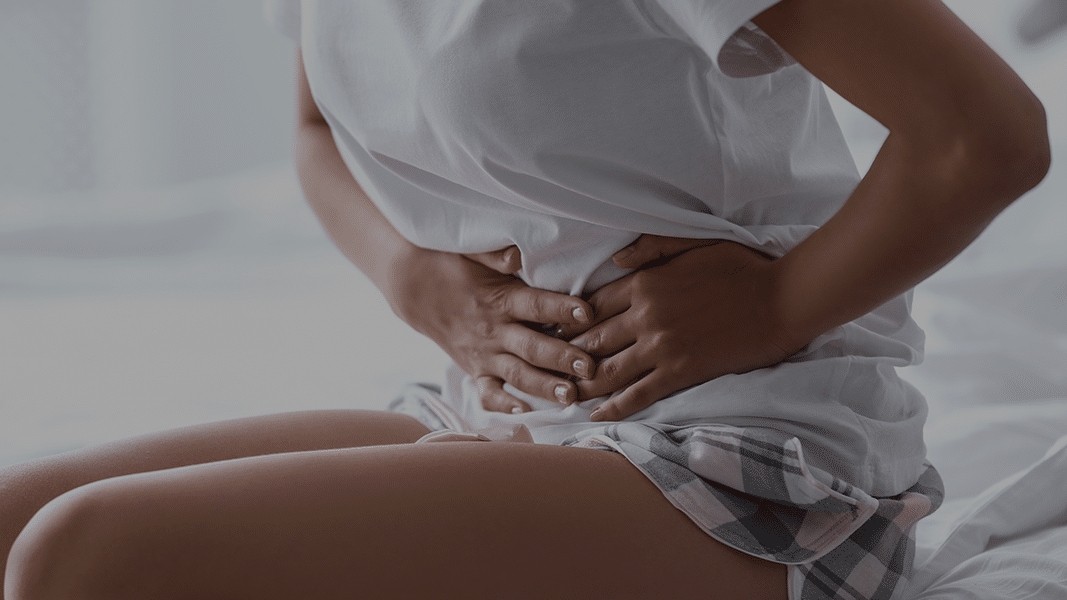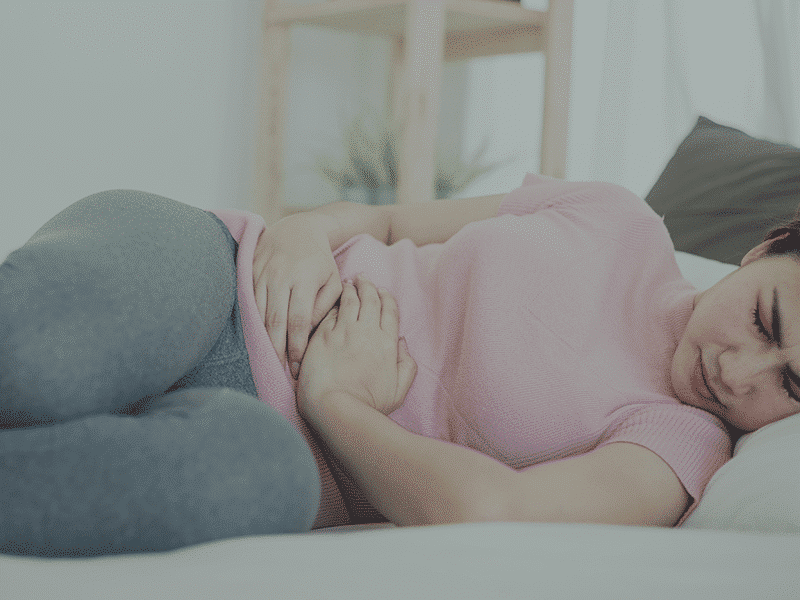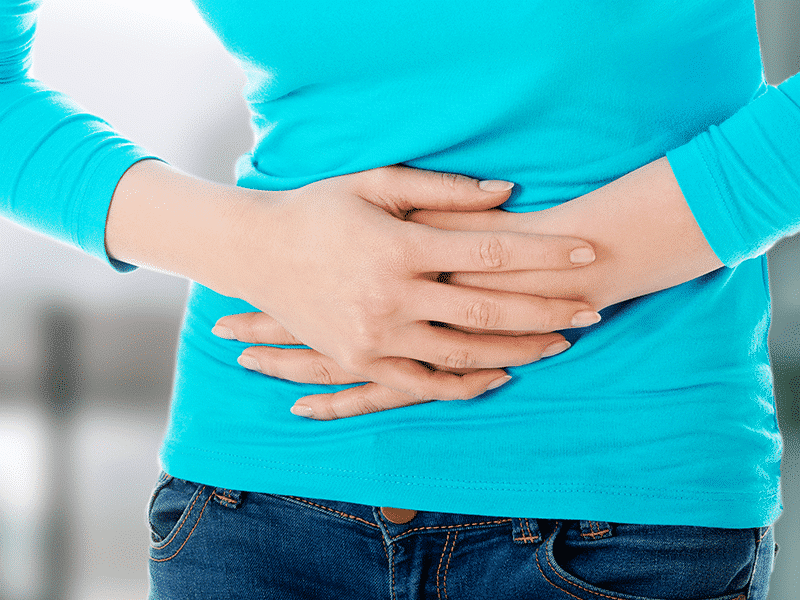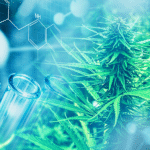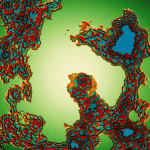Endometriosis, the abnormal growth of cells similar to those in the lining of the womb, is a condition that affects 1 in 10 of women of reproductive age. That’s a staggering 176 million women worldwide.1
For reasons still not fully understood, endometrial tissue begins to grow outside the uterus, gathering around the nearby pelvic organs such as the fallopian tubes, ovaries, bladder, and bowel. The trouble is, every time a woman goes through the bleeding phase of her menstrual cycle, so do the errant endometrial cells. Although in their case, there is nowhere for the blood to exit the body, causing pain, inflammation, and in some cases the formation of scar tissue.
Not all women experience the excruciating pain and heavy periods associated with the disease, but even in these less severe cases, if left untreated, endometriosis can lead to infertility.
‘A Woman’s Lot’
Carrie, 29 from the UK and author of The Endo Monologues, started noticing she had heavier periods than her friends at the age of fourteen. Like many women and girls with ‘problem periods,’ she was put on the pill which helped at first.
“My pain kind of started to get worse in my late teens, early 20s,” recalls Carrie. “I was missing school, I started missing university. And it just felt like I had a hot knife piercing around my pelvic area and my back.”
Echoing the experience of most endometriosis patients, the pain was worse around her periods. “I’d be bed bound,” says Carrie. “Being on the pill kind of shortened it but it hurt to go to the toilet, it hurt to walk, it hurt to sleep, I couldn’t have sex, it just became unbearable.”
For years Carrie’s pain was not taken seriously, reflecting an overall gender bias in drug research and medicine itself.2
It’s been reported that when it comes to pain, women are more likely than men to be given sedatives rather than actual pain medication, probably stemming from an erroneous link between women’s health and hysteria dating back to the Ancient Greeks.3 This was certainly Carrie’s experience.
“I was made to think that I was just being overdramatic and that maybe I was just over exaggerating it because I wanted the attention and was almost being gaslit to be made to feel that it was in my head. They said, ‘Oh, well, you know, it’s just your period, that’s how it is.’ It very much got brushed aside.”
Tenacious Cells
In Carrie’s case, accusations of promiscuity were even made by her doctor, and she was sent off to a STI [sexually transmitted infection] clinic before her symptoms were finally taken seriously. A laparoscopy revealed stage 4 endometriosis on her ovaries, uterus, bladder, bowl, and pouch of douglas. The stray endometrial tissue was surgically removed.
But endometrial cells are tenacious and persistent, and surgery provides only temporary respite from the pain. The tissue almost always returns accompanied by the all too familiar excruciating symptoms. In addition to over-the-counter pain medication, such NSAIDs and paracetamol, standard treatments include the contraceptive pill or coil containing progesterone, which limits the development of endometriosis in a percentage of patients. (Estrogen on the other hand encourages endometriosis to grow and spread.)
With many patients still enduring unbearable pain, self-care methods such as breathing techniques, yoga, and stretching, as well as cannabis and CBD oil, are commonly used to bridge the gap. One Australian online survey interviewing women from an endometriosis support group found that cannabis and CBD oil were the most effective of all the self-care techniques for endometriosis pain.4
For Carrie, CBD oil was a game-changer in managing her symptoms. With suggestions gleaned from endometriosis online forums, she began applying CBD lube, vaping CBD, and using CBD tinctures.
“I finished the bottle and I kind of thought, did it make a difference?” recalls Carrie. “And then after not taking CBD for a week, I realized how much pain I was actually in. And I was like, you know what, I’ve got to keep taking this. So I use the vape if I’m having a really bad flare-up, and I take it as an oil daily now to the point where I haven’t had to use over-the-counter painkillers for nearly a year. There’s been a couple of times when I’ve run out and I’m in so much pain that I’m stuck in bed or I’ve had to come home from work because I can’t move. So I use it religiously now. And it’s made such a difference to my pain levels and my mental health. I just feel better when I’m taking it.”
Endometriosis & Endocannabinoid Dysfunction
While cannabis brings pain relief to thousands if not millions of women around the world with endometriosis, it’s possible the plant’s therapeutic potential may stretch beyond just managing the pain and could limit the spread of endometrial cells around the body.
In a similar way to cancer, endometrial cells tenaciously refuse to die and migrate to other parts of the human organism. When functioning optimally, the endocannabinoid system – the body’s innate regulating system – should be able to cause apoptosis (natural cell death) and prevent unwanted cell proliferation. However, in the case of endometriosis, for some reason the cells are left to run riot.
Exactly how or why this happens is not fully understood by medical scientists. Whereas copious anecdotal evidence attests to the efficacy of cannabis for symptom relief, the molecular mechanisms for these effects still need to be elucidated.
Could an endocannabinoid system deficiency be a contributing factor to the development of endometriosis? Project CBD posed the question directly to Ethan Russo, MD, who originally coined the phrase clinical endocannabinoid deficiency. Dr. Russo is currently the director of CReDO Science, a company developing and commercializing cannabinoid-related innovations with medical, diagnostic, and industrial applications.
Russo suggests that a dysfunction of the cannabinoid receptors (CB1 and CB2) may explain why overeager cells are left unchecked in endometriosis. “In endometriosis lesions compared to controls, there has been a decrease in both the CB1 and CB2 receptors,” he notes.
THC & Cell Death
It’s possible then to surmise that with fewer CB1 and CB2 receptors in endometrial tissue available for endocannabinoids to bind with, the natural process of apoptosis may be disrupted, allowing aberrant cells to multiply and spread. In preclinical research, cannabinoid compounds – endogenous, phyto or synthetic – that target these two receptors appear to control the development of endometriosis.
“In 2017 there was a study5,” Russo recalls, “that showed that drugs that stimulate CB1 and CB2 both were responsible for decreased proliferation, growth of endometrial tissue, and promoting its breakdown or what’s called apoptosis. Which sounds bad, but this is a normal, programmed cell death that should occur in normal cells, and it’s lost in abnormal growth such as tumors, or in endometriosis. It helps to explain why THC [tetrahydrocannabinol] and potentially other components of cannabis would be symptomatically helpful, and also affect the actual pathological process of endometriosis.”
In a recently published paper6 examining the effect of THC on a mouse model of endometriosis, the psychotropic cannabinoid not only reduced pain measurements but also limited the development of endometrial cysts.
But it’s not just THC’s binding activity at CB1 and CB2 that Russo believes might limit the spread of endometrial cells. Other receptors beyond the canonical endocannabinoid system may also regulate the symptoms and progression of this disease.
CBD for Pain Relief
Endometrium patient forums are alive with anecdotal accounts of patients finding pain relief from taking CBD oil. This may well be attributable to CBD’s activation of the TRPV1 vanilloid receptor, which can be overly expressed in endometriosis patients.7 TRPV1 is a gated ion-channel that generally causes pain when stimulated.
According to Russo, “Cannabidiol is a stimulator of the TRPV1 receptor that is able to desensitize it. That’s a way of saying that after a little bit [of stimulation], the TRPV1 receptor doesn’t respond anymore. So it’s a way of treating pain.” Indeed, the soothing feel of a hot pad is partly thanks to mild activation of heat-sensitive TRPV1 receptors, which leads to desensitization and painkilling.8
Russo also draws attention to “GPR18,” another receptor that may play a role in endometriosis. GPR18 is activated by several endogenous lipid neurotransmitters that also interact with the endocannabinoid system. For example, GPR18 is known to bind with N-Arachidonyl glycine (NAGly), a compound formed when anandamide, the endocannabinoid, is metabolized by the FAAH enzyme. By inhibiting FAAH, cannabidiol (CBD) slows the breakdown of anandamide into NAGly (a GPR18 stimulant) and other metabolites.
Says Russo: “We know that when GPR18 is stimulated, it will increase cellular migration. So in cancer, for example, if you have something that stimulates GPR18, it makes metastasis more likely. As it turns out, some years ago, cannabidiol was shown to be an antagonist of the GPR18 receptor … Because CBD is an antagonist at this receptor, it should help prevent the abnormal spread of the endometrial tissue.”9
However, as is often the case in preclinical cannabinoid research, there are more questions than answers, and nothing is quite as clear-cut as it seems. Contradictory findings are not uncommon when targeting a receptor like an on/off switch. Both THC and anandamide also activate the GPR18 receptor in preclinical studies, and activation of this receptor promotes endometrial cell migration – not exactly the desired therapeutic effect for an endometriosis patient.10
Research conducted by Heather Bradshaw’s group at Indiana University suggests that endocannabinoid dysregulaton – specifically aberrant anandamide metabolism – may be a key factor in the etiology of endometriosis. And while CBD’s potential to halt endometrial cell migration is speculative at this stage, its efficacy as a painkiller is much appreciated by women with endometriosis.
Whole Plant Cannabis Not Isolates
With all this talk of individual cannabinoids and their mechanisms, it would be easy to think that the cannabis plant in its entirety has no place in treating endometriosis.
A passionate proponent of the entourage effect, Dr. Russo is adamant about the importance of whole plant cannabis medicine as a healing modality for endometriosis and other conditions.11 He maintains there are “multiple components of cannabis that can be put together in the right preparation to treat endometriosis, both in terms of symptoms, the pain, and affecting the disease process itself.”
“We’re dealing with complex problems here,” he says. “And it’s rare these days that an issue like endometriosis or cancer or diabetes is going to be successfully treated with one agent. You know, the tendency in traditional pharmacology is to pick a target and be very specific dealing with it. But it may be ignoring the bigger picture, so it’s rare that one molecular mechanism treating it is going to take care of the whole syndrome of associated symptoms.
“And this is a situation where I like to remind people that throughout human history, plants have been medicine … We’ve developed these new chemical entities – drugs – but a lot of those were related directly or indirectly to plant-based substances. And often, these are going to be not only as or more efficacious, but generally speaking, are going to have fewer side effects than some of the synthetic molecules that our bodies may not recognize or break down terrifically well. So they can tend to have a lot of associated toxicities.”
Endometriosis Clinical Research
In what is possibly yet another reflection of the underrepresentation of women’s health in scientific research, thus far no clinical trials have taken place examining the efficacy of cannabis medicine in women with endometriosis.
The closest example has been a randomized placebo trial studying the effectiveness of N-Palmitoylethanolamine (PEA), another endogenous lipid signaling molecule (and a close relative of anandamide), alongside trans-polydatin (a natural precursor of resveratrol), for the treatment of chronic pelvic pain associated with endometriosis.12 The PEA/polydatin treatment showed some promise; it was more effective than a placebo in decreasing cramping, pain during intercourse, and general pelvic pain, but not as effective as a non-steroidal anti-inflammatory drug used in the trial.
Two phytocannabinoid clinical trials are in the offing. In a Spanish open label phase II trial,13 a 1:1 ratio of THC and CBD will be administered in a bid to reduce hyperalgesia in endometriosis patients. While in another phase III double blind placebo study14 patients will receive norethindrone acetate, a type of hormonal treatment, plus either 10mg or 20mg of CBD for the management of endometriosis pain.
But it will be years before sufficient robust evidence is gathered to convince the medical profession that cannabinoids are an effective way to manage endometriosis symptoms. In the meantime, cannabis will no doubt continue to play an indispensable role in the selfcare repertoire of women around the world in managing their endometriosis pain.
Dr Ethan Russo’s full interview about endocannabinoid deficiency can be heard on the podcast Cannabis Voices.
Mary Biles, a UK-based journalist, educator, and Project CBD contributing writer, is the author of The CBD Book (Harper Collins, UK). © Copyright, Project CBD. May not be reprinted without permission.
Footnotes
- Peter A W Rogers et al, Priorities for endometriosis research: recommendations from an international consensus workshop. Reprod Sci 2009 Apr;16(4):335-46.
- Laura Kiesel, Women and pain: Disparities in experience and treatment. Harvard Health Publishing. October 09, 2017.
- Gabrielle Jackson, Pain and Prejudice: A Call to Arms for Women and Their Bodies.
- Mike Armour et al, Self-management strategies amongst Australian women with endometriosis: a national online survey. BMC Complementary and Alternative Medicine Volume 19, Article number: 17 (2019).
- Elif Bilgic et al, Endocannabinoids modulate apoptosis in endometriosis and adenomyosis. Acta Histochem 2017 Jun;119(5):523-532
- Alejandra Escudero-Lara et al, Disease-modifying effects of natural Δ9-tetrahydrocannabinol in endometriosis-associated pain. eLife. 2020
- Bohonyi N et al. Local upregulation of transient receptor potential ankyrin 1 and transient receptor potential vanilloid 1 ion channels in rectosigmoid deep infiltrating endometriosis. Mol Pain. 2017;13:1744806917705564.
- Alok Jha, Heat ‘relieves internal pain.’ The Guardian. 5 July 2006.
- Pertwee, Handbook of Cannabis, Oxford University Press.
- McHugh, Douglas et al. Δ(9) -Tetrahydrocannabinol and N-arachidonyl glycine are full agonists at GPR18 receptors and induce migration in human endometrial HEC-1B cells. British journal of pharmacology vol. 165,8 (2012): 2414-24.
- Russo EB. Taming THC: potential cannabis synergy and phytocannabinoid-terpenoid entourage effects. Br J Pharmacol. 2011;163(7):1344-1364
- Luigi Cobellis et al, Effectiveness of the association micronized N-Palmitoylethanolamine (PEA)-transpolydatin in the treatment of chronic pelvic pain related to endometriosis after laparoscopic assessment: a pilot study. Eur J Obstet Gynecol Reprod Biol 2011 Sep;158(1):82-6.
- Effect of Cannabinoid (THC / CBD 50%) on Hyperalgesia in Patients With Deep Endometriosis (EdomTHC). ClinicalTrials.gov.
- Cannabidiol and Management of Endometriosis Pain. ClinicalTrials.gov.
Recommended Readings
Markers of Endometrial Cancer
Recent research has indicated a role of endocannabinoids in endometriosis and related diseases.
Loss of Cannabinoid Receptors in Adenomyosis
Adenomyosis is a menstrual complication that affects one in five women.
Self-Medicating for Endometriosis
Unfortunately, more women used alcohol than cannabis to manage symptoms.

